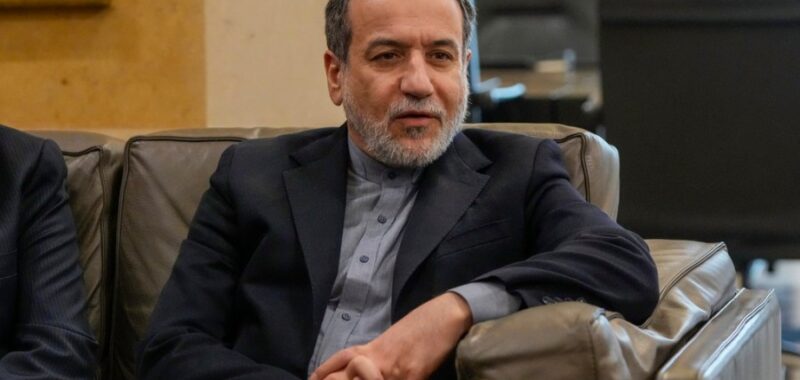
This week Israel attacked Lebanon, Yemen, the West Bank and Gaza, but the real target was Tehran. Israel blames Iran for instigating the Hamas Oct. 7 attack last year and sponsoring Hezbollah, Houthi and Iraqi strikes into Israeli territory. Indeed, many in the United States and around the region attribute the Middle East’s instability to Iran and the so-called Axis of Resistance, the network of Iranian-allied militant groups and outcast governments.
Israel aims both to disable its enemies and to warn any and all that “there is nowhere in the Middle East Israel cannot reach.” But force alone is unlikely to break the Axis or neutralize Iran. Instead, military measures must come alongside diplomatic initiatives that draw these groups away from Iran’s orbit.
The Axis was key to Iran’s expanded influence in the Middle East over the last quarter century. Tehran, wary of confronting Israel or the U.S. directly, found ways to frustrate and disrupt its adversaries. Proxies came cheaply. With paltry subventions and a bit of ideological indoctrination, these acolytes could be trained in improvised weaponry and guerrilla tactics. Many fought and died in places where Iran feared to tread, such as the defense of the Assad regime in Syria. Meanwhile, Iran retained enough plausible deniability to escape recriminations and avoid escalation.
Israel’s attacks puncture this confidence — at least momentarily. Iran has fired ballistic missiles at Israel, but hints at reluctance to employ its own forces to defend its junior allies. Hezbollah, meanwhile, is staggering and Hamas is in hiding. But all these groups have managed to rebuild and recover after intensive bombing and military setbacks in the past. Maximum pressure, including decapitation strikes, has rarely proven sustainable or effective.
The military approach must come with efforts to counter the political inertia that makes the Axis spin. Thomas Schelling, the pioneering game theorist and strategic thinker, pointed out that the kind of proxy war which Iran is waging is rife with principal-agent problems. Iran is eager to transfer risk on its proxies. But are the proxies willing to do the principal’s bidding?
Hamas, Hezbollah and the Houthis no doubt sympathize with Iran’s larger geostrategic vision, but their key interests are more parochial, and their politics are local. These groups share similar origin stories, emerging in periods of civil war and domestic strife, championing constituency like the Shi’is of Lebanon, the Zaydis of Yemen and the Palestinian people, that had suffered repression and exclusions. Their demands for representation and self-determination were ignored, both in the domestic arena and the larger international community. These groups were never just terror cells. Rather, they integrated fighting forces, political parties and social service organizations in one.
Iran slotted easily into the role of foreign sponsor, especially since these groups’ primary domestic antagonists were seen as American stooges. Hamas, Hezbollah and the Houthis each grew more robust with Iranian support, but also thuggish and politically uncompromising. Still, these groups also guarded their own autonomy, attempting to apply Iranian resources to their own pursuits.
There were frictions between serving Iran as sponsor, and meeting the demands of domestic constituencies for protection, representation and social support. Iranian support has cost these groups both in military exposure and in reputation. Some have tried a more independent line. Hamas, for instance, rebuffed Iran’s effort to enlist it in the Syria campaign in 2011. Yet, with no other foreign suitor available, reconciliation eventually ensued.
Proxy wars are hard to stop because sponsors shift the costs of battle to others, postponing the arrival of hurtful stalemate that could bring parties to negotiate.
An alternative approach is to focus on peeling away the proxies. If the people that currently back Hamas, the Houthis and Hezbollah see that their political demands for equitable representation and self-determination are achievable through a political process, Iran’s instigations will be less compelling.
The carnage of the Gaza war has diverted attention and energy from peace processes in other countries. United Nations-brokered plans for Yemen and Lebanon, which outline plans for inclusive political space that address the interests of these rejectionist groups, languish. Likewise, the urgent need for humanitarian ceasefires in Gaza have outstripped the issue of a large scale land-for-peace deal between Israelis and Palestinians.
Now is the time, while fighting is ongoing and the military momentum disfavors Iran, for the U.S. and its key regional partners, like Saudi Arabia, Turkey and the Emirates, to revive these discussions and offer real inducements for the Axis’s junior partners to set aside their proxy yokes.
Ariel I. Ahram is professor in the Virginia Tech School of Public and International Affairs and author of “War and Conflict in the Middle East and North Africa” (Polity, 2020). From 2017 to 2020 he was the primary investigator for the Proxy Wars Initiative, sponsored by the Carnegie Corporation of New York.

